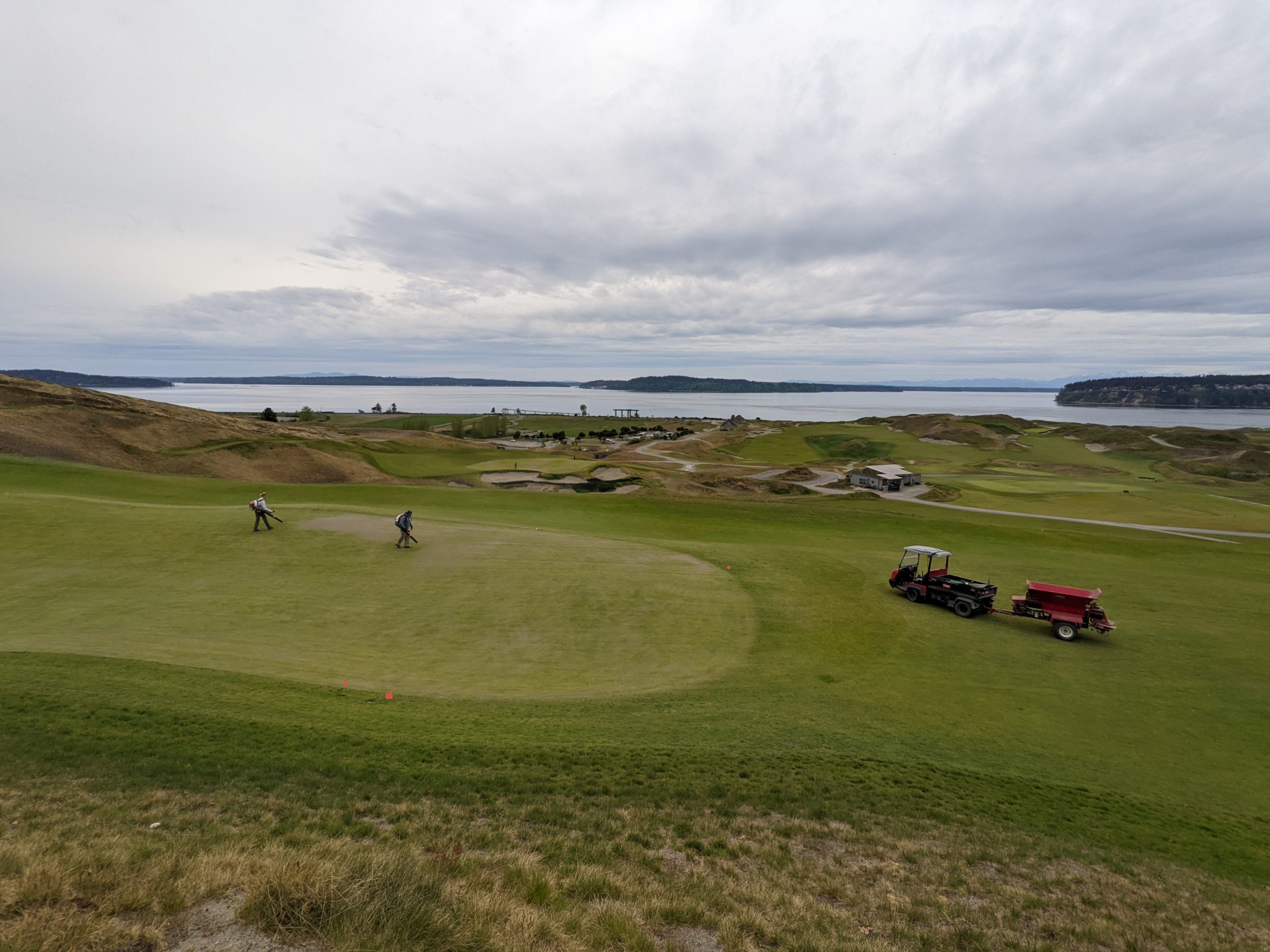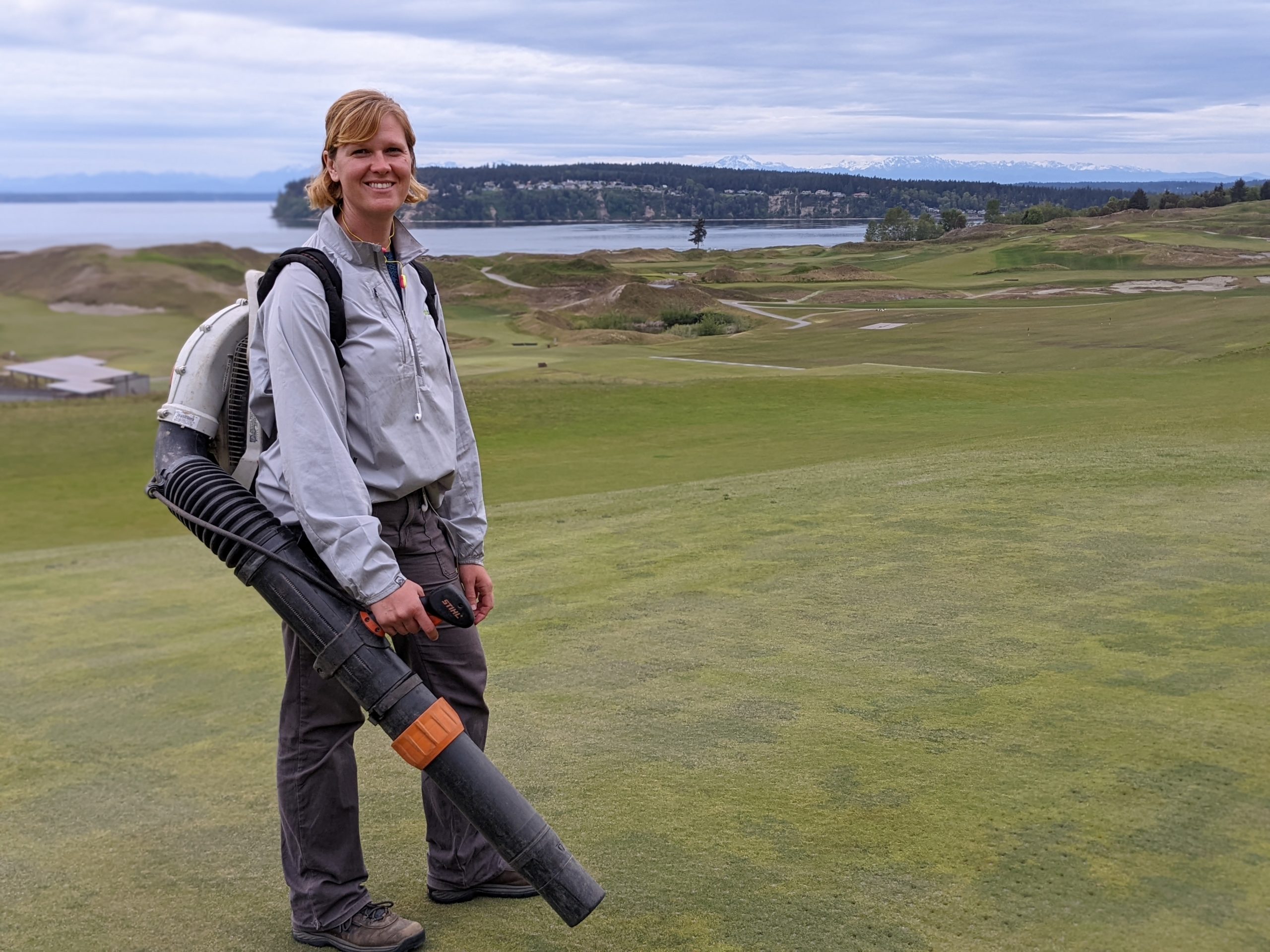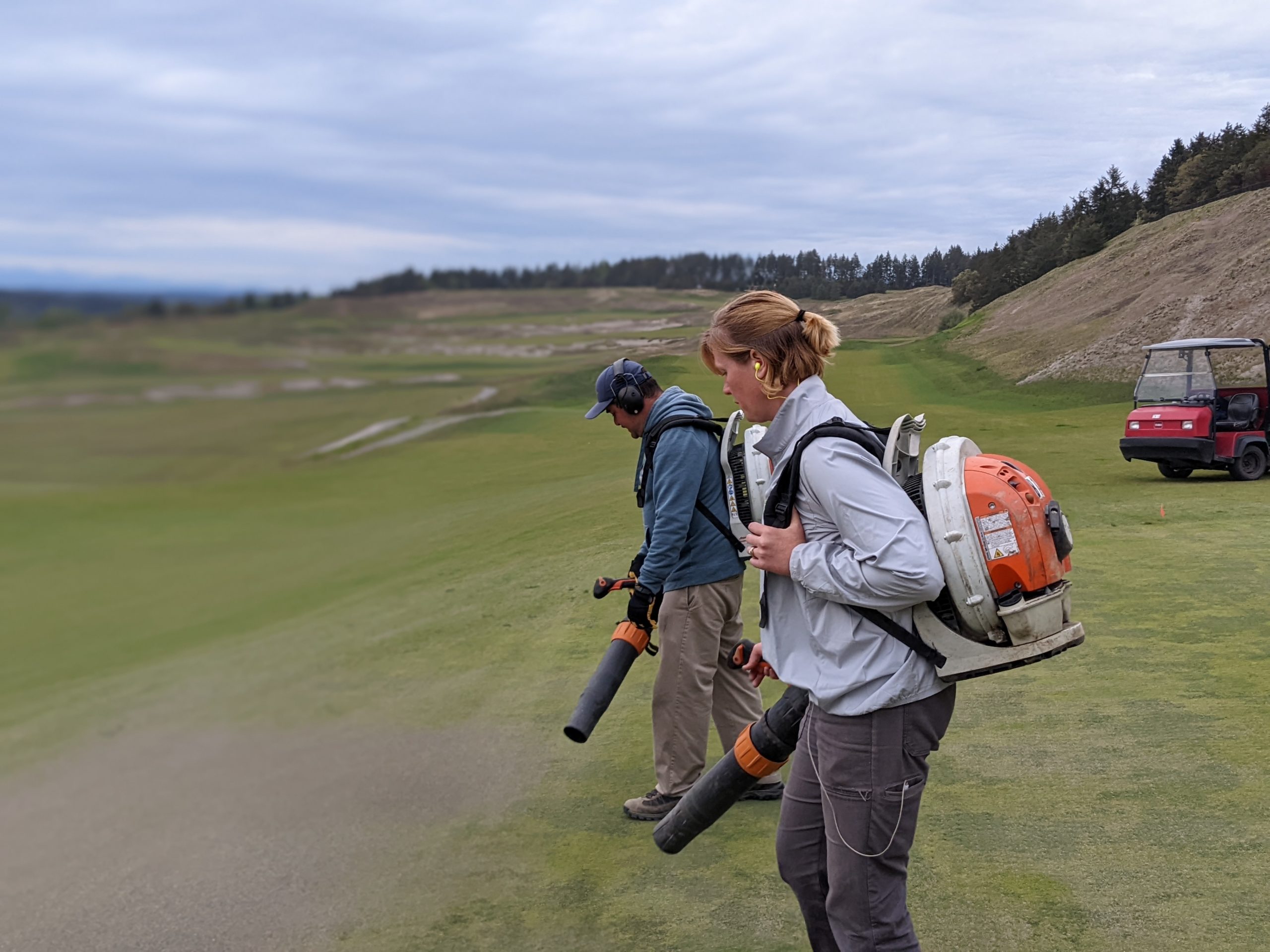by Steve Waxman
 In the second week of August, the best 156 female amateur golfers in the world will gather at Chambers Bay in University Place, Wash. to begin their pursuit of the 122nd U.S. Women’s Amateur.
In the second week of August, the best 156 female amateur golfers in the world will gather at Chambers Bay in University Place, Wash. to begin their pursuit of the 122nd U.S. Women’s Amateur.
The course will, of course, be in pristine condition thanks to the golf course’s own turfgrass team volunteers from across the U.S. Most people think of women as part of the turf team at clubs, but they are playing an increasingly important role in maintaining their courses.
That’s Heather Schapals’ take.
Though Schapals is relatively new to Chambers Bay – she started in her role as senior assistant superintendent in the late spring – she’s hardly new to the business. However, that’s not to say she grew up around the game.
Born and raised in Racine, Wisc., Heather had never stepped onto a golf course before showing up as a 17-year-old at Meadowbrook Country Club. “I always wanted to work outside,” she remembers. “My mom took me to the local job center and the women there said the local country club was always looking for summer help.”
 As Heather contemplated a future working in the turf side of golf, other voices worked to dissuade her, citing the lack of women in the industry. Indeed, the theme of how few women have historically worked on golf course grounds crews comes up time and again. Gwen Stahnke was a trailblazer for women in the turf industry when she became the assistant superintendent at the Medinah Country Club outside of Chicago in 1977.
As Heather contemplated a future working in the turf side of golf, other voices worked to dissuade her, citing the lack of women in the industry. Indeed, the theme of how few women have historically worked on golf course grounds crews comes up time and again. Gwen Stahnke was a trailblazer for women in the turf industry when she became the assistant superintendent at the Medinah Country Club outside of Chicago in 1977.
Formerly a professor in soil sciences at Washington State University who now works at Walla Walla College, Stahnke recalls some of the challenges women had to endure at the time. “People see you and they assume that you’re somebody’s wife,” she says. “You’d show up for an interview and they’d talk to your husband, even though he knew nothing about the business. There are still some assumptions, but it’s not nearly as prevalent as it used to be. I think that the acceptance of females doing the job has become better. It’s not automatic, but it has become better.”
Renee Mitchell was the first female greenskeeper at Chambers Bay, and worked on the crew during the 2010 U.S. Amateur and the 2015 U.S. Open, both held at Chambers Bay. At the time, she was the only woman on the turf crew.
Mitchell recalls at times feeling as though she had to work twice as hard to earn the acceptance from the other crew members. Of course, that isn’t always the case, and more and more women working in turf are supporting one another and being mentored by not only other women, but also by men in the industry.
Heather cites Meadowbrook’s superintendent, Ric Lange, as her mentor. That working relationship led to her first job as an assistant superintendent working at Meadowbrook. She has since explored other opportunities in California and found work as a golf course superintendent at a number of courses before the opportunity at Chambers Bay presented itself. As a matter of fact, Lange was one of the first people she called to discuss the job at Chambers Bay.
While the number of women working as superintendents in the industry has increased over the years, studies show that there is still a long way to go. Only two percent of the membership of the Golf Course Superintendents Association of America is comprised of women, but the industry is trying its best to change that.
For the 2021 U.S. Women’s Open at the Olympic Club in San Francisco, Troy Flanagan, Olympic’s director of maintenance, made it a point to recruit as many female volunteers onto his crew as possible for the championship. Ultimately, 29 women worked the greens and fairways at Olympic during the championship, bringing a new focus to the opportunities in the industry.
Stahnke agrees that mentoring and initiatives such as those undertaken by Flanagan, as well as events like the “Ladies Leading Turf: Mentoring Women” seminar at the 2022 GCSAA Conference and Trade Show in San Diego, help women support one another and grow into leadership roles. “You’re seeing far more females getting notoriety in public and on TV than you ever saw before,” she says.
 Schapals has already begun her preparation for the U.S. Women’s Amateur. In addition to making sure that everyone will have what they need to be successful in their role, she is also beginning the process of sorting through volunteers to join her turf crew for the championship. She plans on taking the lead from last year’s U.S. Women’s Open and will recruit as many women as possible.
Schapals has already begun her preparation for the U.S. Women’s Amateur. In addition to making sure that everyone will have what they need to be successful in their role, she is also beginning the process of sorting through volunteers to join her turf crew for the championship. She plans on taking the lead from last year’s U.S. Women’s Open and will recruit as many women as possible.
“There’s a gentleman on staff who has been around for a long time who has taken on the project of finding other women in turf and he’s putting together a pretty good-sized list of women who are nearby,” she says.
And that’s the goal: bringing more people into the game, whether that’s playing, as is the case at the U.S. Women’s Open and U.S. Women’s Amateur, heading to the first tee as a public player year-round, or helping maintain the great facility that is Chambers Bay. Pioneering women have advanced the standard in turf maintenance, allowing the sport to flourish and attract more women to this vital part of the game.
(This article was first published in “Chambers Bay – The Journal,” and is used here by permission.)
